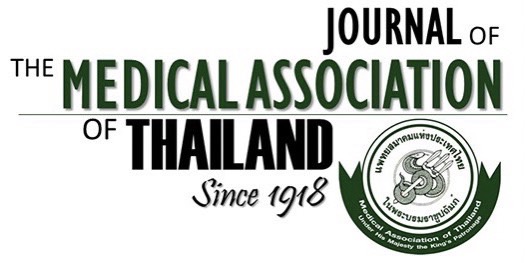Quality of Life among the Traumatic Spinal Cord Injured Patients
Piyapat Dajpratham MD*, Racharin Kongkasuwan MD*
Affiliation : * Department of Rehabilitation Medicine, Faculty of Medicine Siriraj Hospital, Mahidol University, Bangkok, Thailand
Objectives: To study the quality of life among the traumatic spinal cord injured patients and to identify the factors related with
the quality of life in the good level of such patients,
Material and Method: The traumatic SCI patients who had been treated in the Department of Rehabilitation Medicine, Siriraj
Hospital, Bangkok, Thailand from January 2003 until August 2009 were interviewed for the demographic data. The injury
related data were obtained from the medical records. The WHOQOL-BREF-Thai was used to acquire the QOL score, which
would be interpreted as poor, fair, and good QOL level according to the questionnaire. The Center for Epidemiologic Studies
Depression scale and the modified Barthel Index (BI) were used to assess depression, and functional disability respectively.
The median split method was used to divide the participants into two groups as good and poor QOL groups. The Chi-square
and Independent Sample t-test were performed to determine the difference between these two groups and multivariate logistic
regression was used to analyze the factors associated with the good QOL. P-value < 0.05 was accepted as statistical
significance.
Results : Sixty-seven patients (49 males and 18 females) with a mean age 36.54 + 11.46 years old participated the present
study. They suffered from traffic accident 67.2%, gunshot 16.4%, fall from a height 11.9%, and others 4.5%. The injury levels
were cervical 31.3%, thoracic 50.7%, and lumbosacral 18%. Most of them (60.6%) had incomplete lesion. Eighteen patients
(26.1%) reported depression. The mean BI score was 69.71 + 29.42. Three (4.5%), forty-nine (73.1%), and fifteen (22.4%)
participants reported their QOL score in the range of poor, fair, and good levels respectively. Using the median split method,
participants with a score over 82 were classified as having good QOL groups and the rest were classified as having poor
QOL group. When considering the score in each domain of the WHOQOL questionnaire, the differences between the good
and poor QOL groups had statistical significance. The sufficient income (OR 13.67, 95% CI: 3.1-60.22, p = 0.001), having
no depression (OR 7.6, 95% CI: 1.17-49.22, p = 0.033), and being employed (OR 6.88, 95% CI: 1.44-32.94, p = 0.016) were
significantly related with the good QOL.
Conclusion : Most of the SCI patients determined their QOL as fair level. Sufficient income, having no depression, and being
employed were associated with the good QOL.
Keywords : Depression, Income, Quality of life, Spinal cord injury, Work



